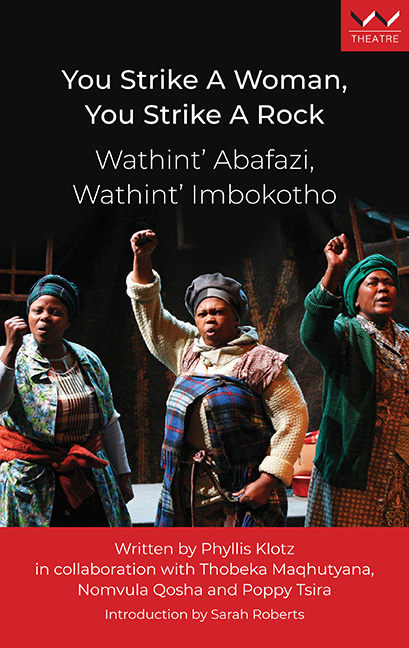Summary
• What does the play teach us about the 1956 Women’s March and from what viewpoint? What are the slogans written on placards or included in the anthem sung by the women? How do these compare with slogans – written, spoken and sung – used in protests today?
• What information is recorded in your identity document and/or passport? What do these documents represent and how do they differ from the dompas? What does the play teach us about the dompas and the system of social segregation it supported?
• What does the play say about the way the roles women perform define them in terms of their relationships with men? In what ways do the women resist these roles and expectations?
• In what ways does the text incorporate the distinction between local urban/township experiences and those in rural areas? Why is this important? What details of each character's individual history distinguish her personality and behaviour?
• The stage directions indicate a ‘non-realistic’ neutral space in which the props are mimed. What are the advantages of this style of presentation?
• Bertolt Brecht championed using historical incidents and settings in order to write plays that challenged the political processes of his own time. He favoured detachment or ‘distance’ that would enable an audience to think critically about issues rather than simply become caught up in the emotions evoked by the play. He used various techniques to achieve this sense of distancing. Three Brechtian strategies are used in this play: the montage of scenes, each of which is more or less autonomous; the introduction of song to interrupt the flow of action; and the use of scene titles. The Brechtian-style scene titles indicate that the sketches focus on episodes or situations beyond the immediate present. How do the scene titles locate or anchor scenes and character experiences in this play?
• Ordinary life is set against a backdrop of constant military and police presence. What are some of the indicators of state presence?
• The play integrates vernacular with English. What is the effect of this linguistic intertwining? The action is also punctuated with songs. What is the effect of this pattern?
- Type
- Chapter
- Information
- You Strike a Woman, You Strike a Rock / Wathint' Abafazi, Wathint' ImbokothoA play, pp. 67 - 68Publisher: Wits University PressPrint publication year: 2021



